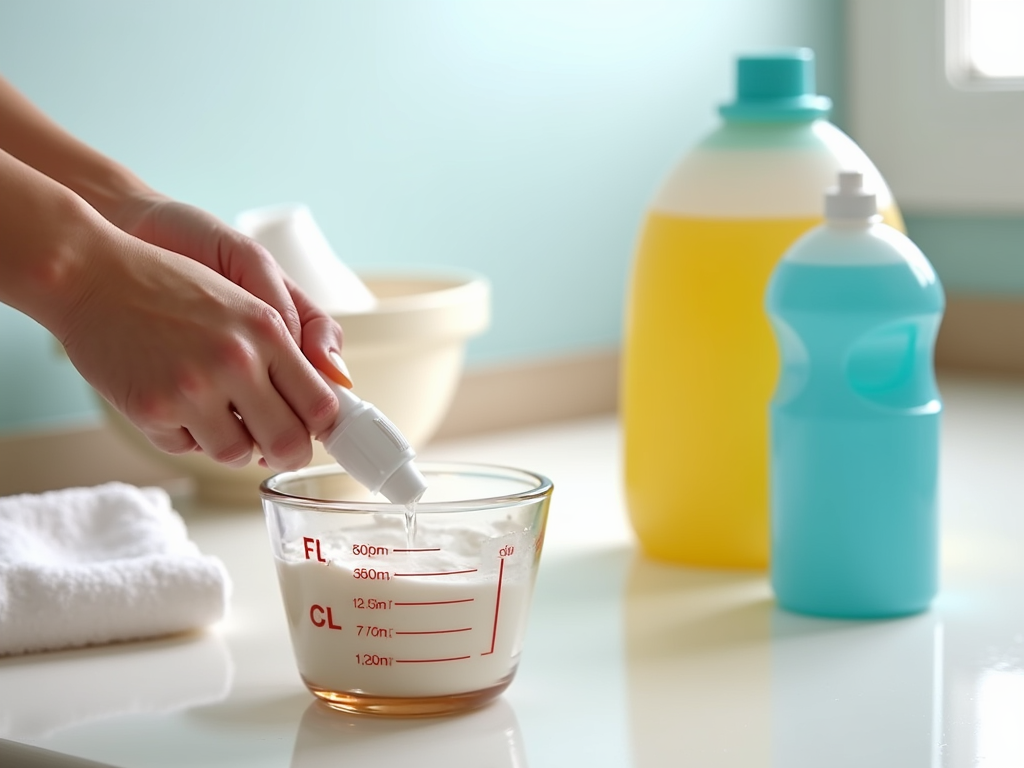Is Bleach or Baking Soda Better for White Clothes?
When it comes to maintaining the brightness of white clothes, the debate between using bleach and baking soda is a common topic among laundry enthusiasts. While bleach is often touted for its powerful whitening and disinfecting capabilities, baking soda is celebrated for its gentleness and multi-purpose benefits. The choice ultimately depends on the fabric’s sensitivity, the desired results, and individual preferences.
The Strengths of Bleach

Bleach is a potent chemical agent commonly used in laundry for its ability to brighten whites and eliminate stubborn stains. Its main active ingredient, sodium hypochlorite, works by breaking down the chemical bonds of stains, effectively rendering them colorless. However, it is essential to use bleach with caution:
- It can weaken fabric fibers over time, leading to wear and tear.
- Some fabrics, such as silk and wool, can be damaged by bleach.
- Bleach may cause yellowing if used excessively or improperly.
- Inhalation of bleach fumes can be harmful; proper ventilation is important.
- Mixing bleach with other cleaning agents, especially ammonia, can produce toxic gases.
In summary, while bleach is effective for deep cleaning and whitening, it may not be appropriate for all fabrics and requires careful handling during use.
The Benefits of Baking Soda

Baking soda, or sodium bicarbonate, is a naturally occurring compound that has gained popularity among eco-conscious consumers. Unlike bleach, baking soda is a gentle, non-toxic alternative that not only whitens but also deodorizes clothes. Here are several reasons to consider using baking soda in your laundry routine:
- It helps neutralize odors, leaving clothes smelling fresh.
- Baking soda softens water, which can enhance the effectiveness of your regular detergent.
- It is safe for a wider variety of fabrics, including delicate materials.
- Baking soda can work effectively to remove light stains and brighten whites without harsh chemicals.
- It’s an inexpensive option that can easily be found in most households.
Overall, baking soda provides a safer and more fabric-friendly solution for maintaining the appearance of white clothes, particularly for those wary of harsh chemicals.
Many laundry experts advocate for a combined approach to take advantage of the strengths of both bleach and baking soda. This method can maximize whitening while minimizing potential damage to fabrics. Here’s how to do it:
- Start by mixing 1/2 cup of baking soda with your regular laundry detergent.
- Add 1/4 cup of bleach to the washing machine during the rinse cycle.
- Make sure to wash only white and bleach-safe items to avoid color transfer.
- Use warm or hot water for effective disinfection and stain removal.
- Check the care labels on your clothing to confirm they can withstand bleach treatment.
This combination can provide an effective cleaning solution that balances the benefits of both products while reducing the potential risks associated with bleach alone.
Considerations for Fabric Care
Deciding between bleach and baking soda also hinges on fabric care recommendations. Different fabrics have varying tolerances to bleach, which is critical to prevent damage. Here are some general guidelines:
- Cotton: Typically, this fabric can handle bleach well, but test for colorfastness first.
- Synthetic fibers: Use caution; many synthetic fabrics may weaken with bleach.
- Delicate fabrics: Invest in baking soda; it provides a gentler cleaning option.
- Mixed fabrics: Check the composition of the fabric blend before applying bleach.
- Workwear and uniforms: Consider whether stains require either product’s specific cleaning power.
Knowing which fabrics are bleach-safe will help prolong the life of your garments while ensuring they remain bright and clean.
Conclusion
Ultimately, the decision of whether to use bleach or baking soda for white clothes depends on various factors, including fabric type, stain severity, and personal preference. While bleach is undeniably effective for heavy-duty whitening, baking soda offers a gentler approach with additional benefits such as odor neutralization. By understanding the strengths and limitations of both options, you can make an informed choice that best meets your laundry needs.
Frequently Asked Questions
1. Can I mix bleach and baking soda?
While you can use them in the same wash cycle, avoid mixing bleach and baking soda together directly, as it can create a reaction that is harmful.
2. Will baking soda really whiten my clothes?
Yes! Baking soda can help brighten whites and remove light stains while being gentler on fabrics compared to bleach.
3. Is bleach safe for all white fabrics?
No, bleach is not safe for all fabrics. Always check the garment care label to confirm bleach compatibility before use.
4. How much baking soda should I use for laundry?
Generally, 1/2 cup of baking soda added to your laundry load is sufficient for boosting cleaning power and whitening effects.
5. Can I use baking soda instead of detergent?
Baking soda can supplement your detergent, but it doesn’t replace it entirely. It enhances the laundry process but should typically be used alongside detergent for best results.
